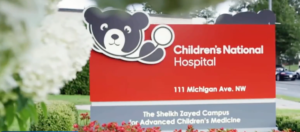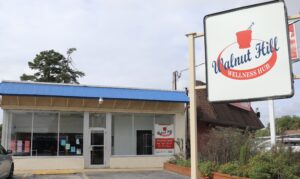There is a new category of food distribution in the works, and the San Francisco-Marin Food Bank is helping to define it.
Rooted in the concept of food as medicine, SFMFB is working with the San Francisco Department of Public Health to develop a network of “food pharmacies,” which look like regular pantries on the surface, but have a lot going on behind the scenes that make them more effective in treating chronic disease through better nutrition.
Increasingly, the medical community is realizing that diets rich in nutrients can go a long way toward combating disease, and even supplant the need for medication in the first place. But access to healthy food, particularly among low-income patients, has been a barrier. SFMFB’s food pharmacies — there are five so far, serving seven clinics — are designed to eliminate as many obstacles to healthy eating as possible.
Like all of the pantries in SFMFB’s network, the food pharmacies distribute 20 to 30 pounds of food to each client, which include 65% of fresh produce, plus protein and grains. Where the pharmacies supercede regular pantries is with respect to the wide range of additional services they offer.
At the pharmacies, patients can get their blood pressure screened on a weekly basis. Through cooking demos, recipe exchanges, and health and nutrition events, they can learn about anything from knife handling skills to flavorful alternatives to salt. Patrons may qualify to get kitchenware, like measuring cups, frying pans or crockpots, and can get referrals to other food assistance such as SNAP.
“The real thing that a participant is missing out on by not going to a food pharmacy is that connection to comprehensive services,” said Sheila Kopf, the director of programs at SFMFB.

Sheila Kopf helped craft San Francisco-Marin Food Bank’s approach to food pharmacies.
Just as important, each of the pharmacies is co-located in a medical facility, a design that underscores the deep connection between food and health, Kopf said. Ideally, patients who have been prescribed by their doctors to eat more healthfully can get immediate access to fresh fruits and vegetables at an on-site pharmacy.
SFMFB’s current operating model emerged following a spring 2016 pilot of a food pharmacy that identified problems related to sustainable staffing and funding. Specifically, the AmeriCorps volunteers who were running the pilot were not available long-term. Now supported by a grant from the Hellman Foundation, the food pharmacy program has a Food as Medicine Program Manager who works with a small team to liaison with all of the food pharmacies and try to get more on board.
The clinics in which the food pharmacies are located have a big role to play. Each is required to have a pantry coordinator, staffed by the clinic, who communicates with the food bank. The clinics also engage volunteers and/or staffers to handle the various roles of educating, and doing the referrals, cooking demos and blood screenings. “It’s a big lift,” Kopf said of the clinics. “They have to be ready to support it.”
Space was a consideration in developing the current model. All of the food pharmacies operate like pop-up shops, taking same-day delivery of the food and distributing it right away, eliminating the need for on-site storage. One pharmacy can only take delivery of the food between the tight window of noon and 1pm, when the clinic is officially closed, because it is located right off the clinic’s waiting room, Kopf noted. SFMFB looked into a model pioneered by the Greater Boston Food Bank, which operates a dedicated food pharmacy at a medical center five days a week, but abandoned that idea in favor of a once-a-week, same-day model due to the clinics’ space constraints, she said.
The efforts of SFMFB and the city’s Department of Public Health are starting to pay off. After about one year, 65% of the food pharmacy patients have seen declines in their blood pressure, a trend that was statistically significant. While the direct impact of the pharmacies on this result is unclear, “we were quite impressed by that number,” Kopf said. Another positive has been the sense of community that has built up around the pharmacies, as patients participate in events and even share recipes. “It’s really deepening their relationships with the clinics,” Kopf said.
Kopf credits the food bank’s relationship with Dr. Rita Nguyen, now a chronic disease specialist at the city’s Department of Public Health, as critical to developing the program. As a practicing physician, Dr. Nguyen witnessed first-hand the impact that a lack of access to healthy food had on her patients’ deteriorating health, and she took an active role in rounding up support for the program. “I don’t know how successful we would have been if we were cold-calling the clinics,” Kopf said.
CAPTION: San Francisco-Marin Food Bank’s initial food pharmacy at the Maxine Hall Health Center in San Francisco.








